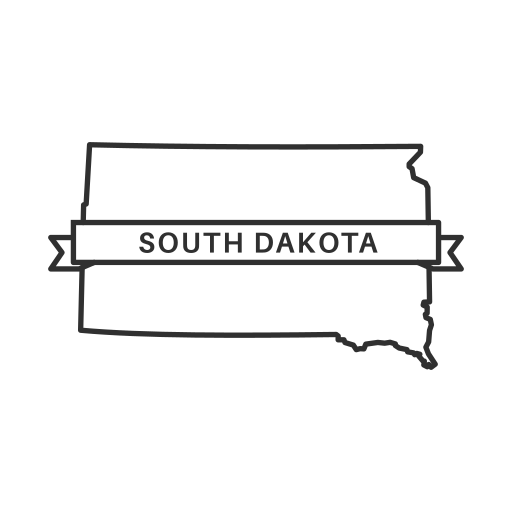South Dakota Child Abuse Statistics 2023: Facts about Child Abuse in South Dakota reflect the current socio-economic condition of the state.

LLCBuddy editorial team did hours of research, collected all important statistics on South Dakota Child Abuse, and shared those on this page. Our editorial team proofread these to make the data as accurate as possible. We believe you don’t need to check any other resources on the web for the same. You should get everything here only 🙂
Are you planning to start a South Dakota LLC business in 2023? Maybe for educational purposes, business research, or personal curiosity, whatever it is – it’s always a good idea to gather more information.
How much of an impact will South Dakota Child Abuse Statistics have on your day-to-day? or the day-to-day of your LLC Business? How much does it matter directly or indirectly? You should get answers to all your questions here.
Please read the page carefully and don’t miss any words.
On this page, you’ll learn about the following:
Top South Dakota Child Abuse Statistics 2023
☰ Use “CTRL+F” to quickly find statistics. There are total 12 South Dakota Child Abuse Statistics on this page 🙂South Dakota Child Abuse “Latest” Statistics
- Statistics have proven that 90% of sexual abuse offenders know their victims, however, only 1 in 10 children will disclose any information regarding the abuse.[1]
- The Children’s Home Child Advocacy Center 2018 has provided forensic interviews and advocacy for 350 children and their families.[1]
- The ethnicity with the most child abuse victims in South Dakota is white children, which comprises 33.6% of all child abuse cases reported in the state from 2016 – 2020.[1]
- Neglect is the most common form of child maltreatment in South Dakota, which comprises 95.24% of all child abuse cases in the years 2016 – 2020.[1]
- In the year 2020, there’s a total of 446 children waiting for adoption in South Dakota.[1]
- According to data, an average of 0.21% of children in foster care were maltreated in South Dakota from 2016 – 2020.[1]
- The data from cwoutcomes.acf.hhs.gov shows that 8% of children experience a recurrence of child abuse or neglect from 2016 – 2020.[1]
South Dakota Child Abuse “Abuse” Statistics
- Publicly released data shows that 1 in 4 girls and 1 in 6 boys will experience sexual abuse by the age of 18.[1]
- Out of all sexual abuse cases, 68% of all instances are not reported to the police.[1]
South Dakota Child Abuse “Other” Statistics
- Data shows that 73% of sexual assaults were masterminded by a non-stranger.[1]
- Among all ethnic groups in the U.S, Native American women are 2.5 times more likely to experience sexual assault.[1]
- 1 out of 6 American women has been a survivor of an attempted or completed rape in her lifetime.[1]
Also Read
- Alaska Child Abuse Statistics
- Arizona Child Abuse Statistics
- Arkansas Child Abuse Statistics
- California Child Abuse Statistics
- Colorado Child Abuse Statistics
- Connecticut Child Abuse Statistics
- Florida Child Abuse Statistics
- Georgia Child Abuse Statistics
- Illinois Child Abuse Statistics
- Indiana Child Abuse Statistics
- Iowa Child Abuse Statistics
- Kansas Child Abuse Statistics
- Kentucky Child Abuse Statistics
- Louisiana Child Abuse Statistics
- Maine Child Abuse Statistics
- Maryland Child Abuse Statistics
- Michigan Child Abuse Statistics
- Minnesota Child Abuse Statistics
- Montana Child Abuse Statistics
- Nebraska Child Abuse Statistics
- Nevada Child Abuse Statistics
- New Hampshire Child Abuse Statistics
- New Jersey Child Abuse Statistics
- New York Child Abuse Statistics
- North Dakota Child Abuse Statistics
- Ohio Child Abuse Statistics
- Oregon Child Abuse Statistics
- Rhode Island Child Abuse Statistics
- South Carolina Child Abuse Statistics
- South Dakota Child Abuse Statistics
- Tennessee Child Abuse Statistics
- Texas Child Abuse Statistics
- Utah Child Abuse Statistics
- Vermont Child Abuse Statistics
- Virginia Child Abuse Statistics
- Washington Child Abuse Statistics
- West Virginia Child Abuse Statistics
- District of Columbia Child Abuse Statistics
How Useful is South Dakota Child Abuse
The consequences of child abuse are far-reaching and devastating, with impacts that extend beyond the individual child to their families, communities, and society as a whole. Children who are abused often struggle with a range of emotional and behavioral issues, such as anxiety, depression, anger, and low self-esteem. These children are also more likely to engage in risky behaviors, such as substance abuse, teen pregnancy, and criminal activity, perpetuating a cycle of abuse that can be difficult to break.
In addition to the immediate impact on the child, child abuse also places a significant burden on our healthcare and social service systems. The long-term physical and mental health consequences of abuse can lead to increased healthcare costs and an increased need for social services to support survivors in their recovery. This puts a strain on already overburdened systems and diverts resources away from other critical areas of need.
Despite the myriad challenges posed by child abuse, there are resources available to support survivors and prevent future instances of abuse. Organizations like child advocacy centers, crisis hotlines, and support groups offer critical services to survivors and their families, helping them to heal and move forward from their trauma. Education and awareness campaigns also play a vital role in preventing child abuse by raising awareness of the signs of abuse and providing guidance on how to report suspected cases.
However, despite these efforts, child abuse continues to be a pervasive and troubling issue in our society. In South Dakota, as in many other states, child abuse rates remain alarmingly high, with thousands of children suffering from abuse each year. This is a sobering reminder that there is still much work to be done to protect our most vulnerable citizens and create a safer, more nurturing environment for all children.
As individuals and as a society, we must prioritize the protection of children and work together to prevent child abuse in all its forms. This means speaking out against abuse when we see it, supporting survivors in their recovery, and advocating for policies that prioritize the safety and well-being of children. By working together, we can create a future where every child is safe, supported, and able to thrive free from the shadow of abuse.
Reference
- drugabusestatistics – https://drugabusestatistics.org/alcohol-abuse-statistics/
- chssd – https://chssd.org/cac
- hhs – https://cwoutcomes.acf.hhs.gov/cwodatasite/pdf/south%20dakota.html
- sd – https://doh.sd.gov/statistics/PreventableDeath.aspx
- thecompasscenter – https://thecompasscenter.org/who-we-are/statistics/
